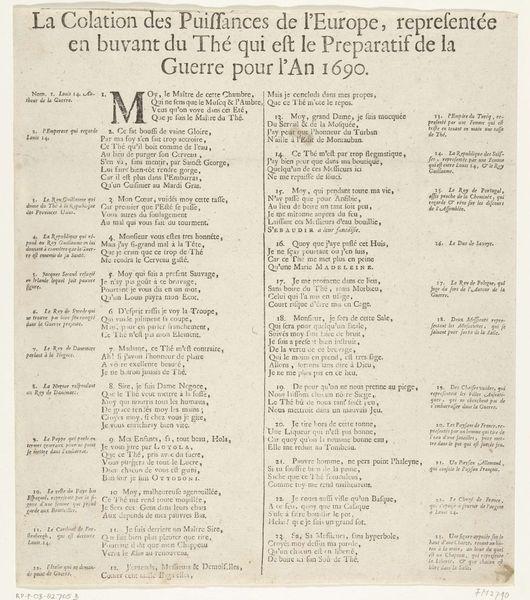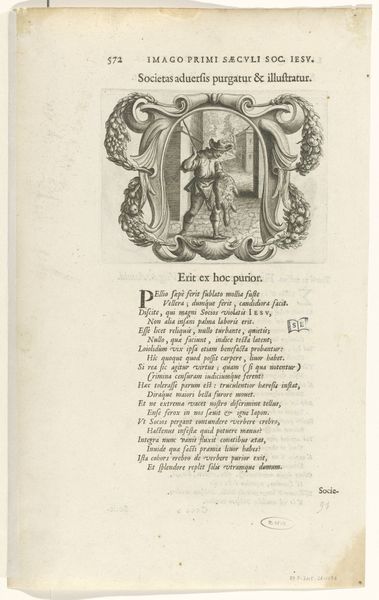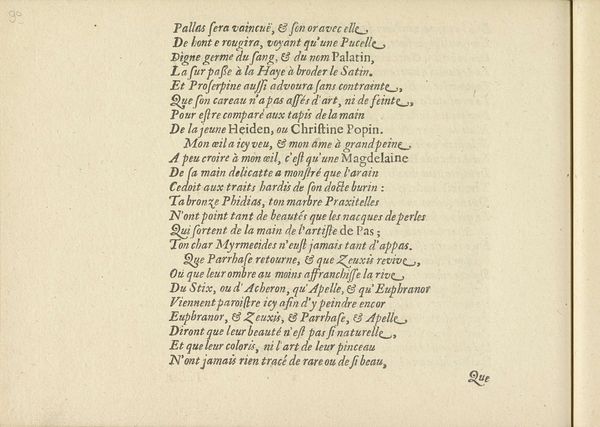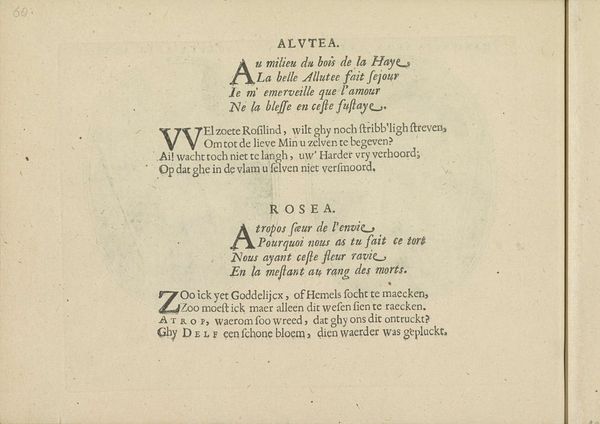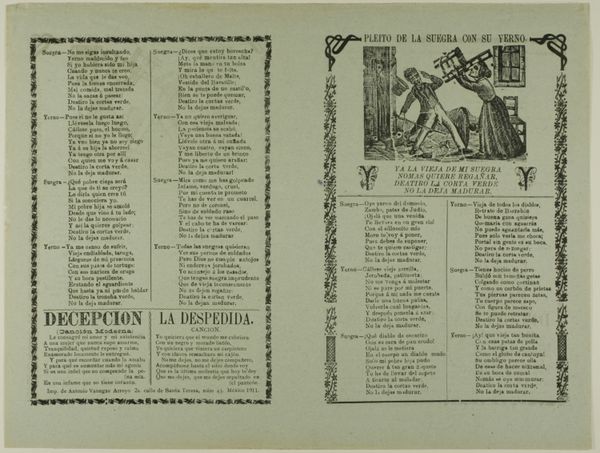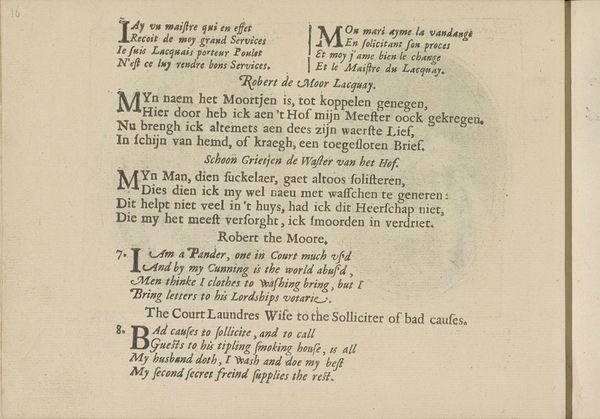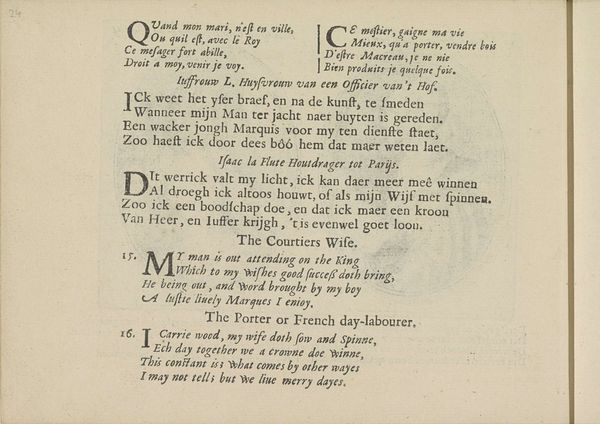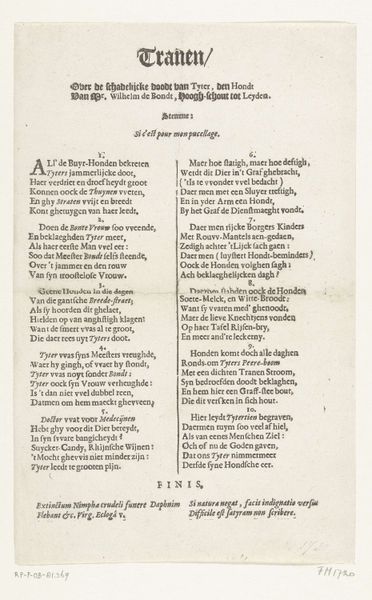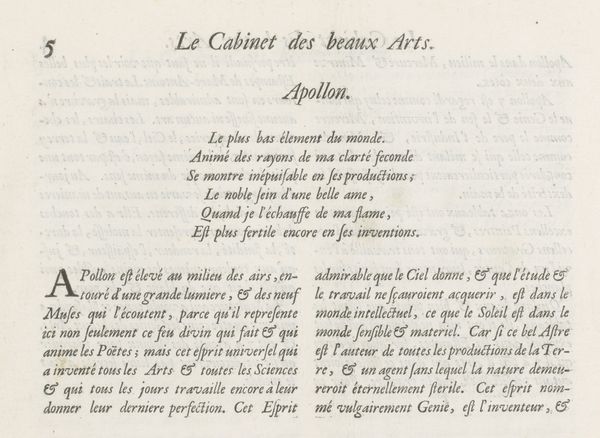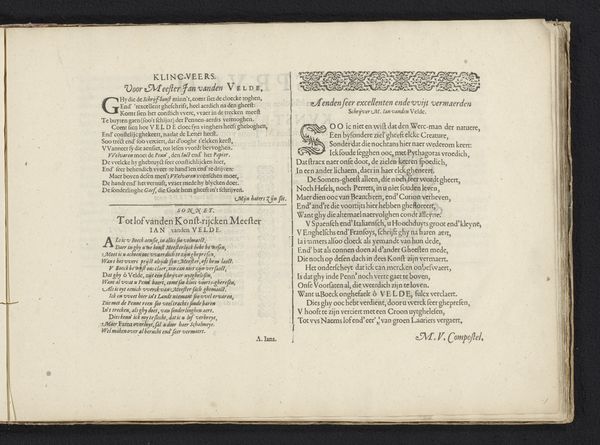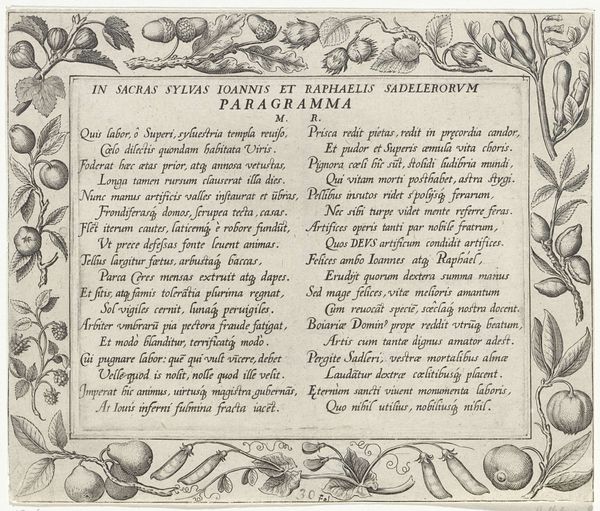
Blad met zinnebeelden ter ere van Lodewijk XIV en de prins van Oranje, 1674 1674
0:00
0:00
print, textile, typography, engraving
#
baroque
# print
#
textile
#
typography
#
journal
#
history-painting
#
engraving
#
historical font
Dimensions: height 345 mm, width 395 mm
Copyright: Rijks Museum: Open Domain
Curator: Here we have a print from 1674, currently residing in the Rijksmuseum, called "Blad met zinnebeelden ter ere van Lodewijk XIV en de prins van Oranje." It's an engraving presenting emblems in honor of both Louis XIV and Prince William of Orange. Editor: Immediately striking. The layout is really divided. On one side, the bold proclamation for Louis XIV, heavy with ornament; on the other, a more stark representation dedicated to the Prince of Orange. Is this intentional? Curator: Absolutely. Contextually, the print emerges during a period of intense political maneuvering. Louis XIV, seeking to expand French power, was met with resistance, most notably from William of Orange. The visual juxtaposition mirrors this antagonism. One side speaks to Louis XIV's preparations for the campaign of 1672, the other to Prince William’s in 1674. Editor: It's interesting to think of how prints like these functioned in shaping public perception. I see two sonnets printed under each emblem, essentially propaganda tools of their time. Were these common? How much influence would it actually have had? Curator: Certainly, such imagery, circulated through printed material, played a pivotal role in constructing national identities and legitimizing rulers. The symbols are powerful; suns, clouds, implied divine right. As to the real influence, it would certainly have been tied to literacy, class and access to information, but nonetheless a part of the battle for hearts and minds. Editor: Looking at the artistic choices, one side uses richer imagery, almost promising greatness. The Prince of Orange’s section has a starker message. I’m particularly drawn to the lower portions of the print: "God knew to raise me up, God will know to destroy you”. That reads less like celebratory devotion, and more like defiant hope in the face of what must have seemed like an indomitable force. Curator: That duality—the co-existence of reverence and resistance—is a fascinating paradox, a push-pull present not only in the artwork but also in the historical context it reflects. Editor: Absolutely, and seeing that resistance embedded into a celebratory print makes you rethink everything, the messaging and intent becomes more fluid. A vital, multilayered historical document indeed. Curator: Indeed, it underscores how art serves as both a reflection and a shaper of its era.
Comments
No comments
Be the first to comment and join the conversation on the ultimate creative platform.


